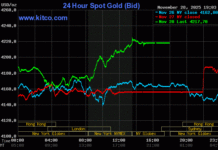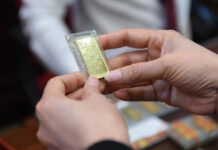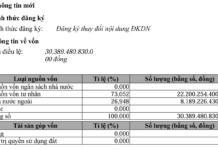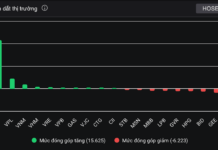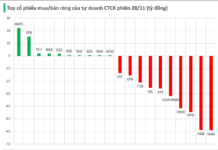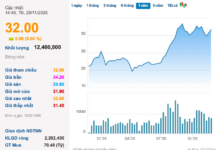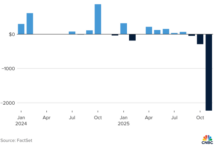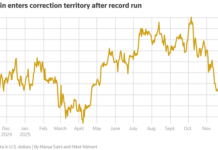
At the banking industry’s press conference for the first half of the year, held on July 23, 2024, Deputy Governor of the State Bank of Vietnam (SBV), Mr. Dao Minh Tu, stated that managing the exchange rate is not a simple task. It requires a comprehensive approach that takes into account various economic factors such as interest rates, money supply, influences from major economies, and market sentiment. To address these challenges, the SBV has employed a range of flexible measures, including foreign currency buying and selling, to maintain a reasonable exchange rate while ensuring foreign currency supply and stabilizing the sentiment of domestic and foreign investors. As a result, the exchange rate has remained stable, with a depreciation of approximately 4.4% since the beginning of the year, compared to some countries experiencing currency depreciation of up to 7-11%.
The Deputy Governor assessed that the current level of VND depreciation is reasonable, as it is impossible to keep the exchange rate rigidly fixed in the current context. Instead, it must be managed harmoniously, taking into account factors such as exports, interest rates, inflation control, and ensuring foreign currency status and supply and demand.
While there will still be exchange rate pressure until the end of the year, it is not overly concerning.
Ms. Phan Thi Lien, Chief Economist and Deputy Head of Stock Analysis and Market Division, Tien Phong Securities Joint Stock Company, attributed the recent increase in exchange rates to several factors.
Firstly, there was an increased demand for USD due to a surge in imports of raw materials, machinery, and equipment as the production sector recovered and new export orders increased significantly. Specifically, the import turnover of goods in March 2024 reached 31.08 billion USD, a 33.4% increase compared to the previous month and a 9.7% increase year-on-year.
Secondly, domestic gold prices rose sharply in line with global gold prices, stimulating gold speculation, which led to increased USD usage for gold imports.
Thirdly, positive news about the US economy, such as PMI and job creation, along with strong first-quarter growth, while inflation remained persistent and far from the Fed’s 2% target, caused investors to reduce their expectations of an early rate cut by the Fed, slowing the weakening of the USD.
Fourthly, the SBV’s monetary easing policy, while the Fed maintained high-interest rates, widened the interest rate differential between the USD and the VND.
Lastly, credit growth and money supply to the economy decreased.
Currently, the Fed has not announced a rate cut schedule, and several international organizations predict that the earliest rate cut could occur in September 2024. Moreover, as the factors influencing the USD/VND exchange rate are still present, the pressure on the economy from exchange rates and interest rates remains unpredictable but not overly concerning. Although the Fed has not cut rates, investors’ expectations have already impacted the strength of the USD. The USD Index has cooled down compared to late June and early July. As of July 21, 2024, the USD Index had increased by 1.99% since the beginning of the year, indicating the weakening of the USD against other currencies, including the VND.
Following President Joe Biden’s decision to drop out of the presidential race on July 22, 2024, the chances of a Republican victory increased. Consequently, the pressure on the Fed to soon implement a rate cut also intensified, which would benefit the USD/VND exchange rate. Thus, it can be seen that while there is still pressure on the exchange rate until the end of the year, it is not overly concerning, and the rate is likely to cool down after the Fed announces a clear rate cut schedule.
Additionally, to attract FDI, the SBV aims to maintain an annual VND depreciation of around 3-4%. To prevent a significant rise in the exchange rate compared to the beginning of the year, the SBV has utilized various tools, including increasing the maturity and interest rates of issued bills to encourage commercial banks to hold them, thereby absorbing excess money from the banking system and enhancing the value of the VND. Ms. Lien expects the exchange rate to increase by about 3-4% in 2024 by the end of the year.
Predicting the trend of the VND against the USD in the coming period, Mr. Suan Teck Kin, Director of Market and Economics Research Division, UOB Group, stated that with the Fed expected to cut rates twice, the USD is likely to depreciate in the second half of the year. This scenario has been anticipated since the end of 2023. The VND could recover in the latter part of 2024, along with the recovery of the CNY and the broad weakening of the USD as the Fed’s rate cuts take center stage. It is anticipated that the VND will gradually strengthen against the USD, reaching 25,200 in Q3/2024, 25,000 in Q4/2024, 24,800 in Q1/2025, and 24,600 in Q2/2025.
The exchange rate is expected to cool down and stabilize in the last six months of the year.
Mr. Nguyen Quang Huy, CEO of Finance and Banking, Nguyen Trai University, noted that international analysts and experts predict the Fed will cut rates once or twice in Q3 and Q4/2024, which will weaken the USD and pull down the exchange rate. Therefore, in the last six months of the year, the exchange rate is likely to cool down and stabilize compared to its current rapid increase.
Meanwhile, with the US presidential election in November 2024, a Trump victory could lead to significant changes in trade policies as the US tightens its protectionist measures. Inflation may rise again, impacting the Fed’s interest rate decisions. Additionally, prolonged geopolitical risks could drive demand for the USD as a safe-haven currency.
Domestically, in the last six months of the year, the demand for foreign currency, mainly USD, is expected to increase as businesses make payments for imported goods to their foreign suppliers. In the economic arena, import and export activities are experiencing a strong recovery, with a trade surplus of 11.63 billion USD in the first six months of the year. This trend is projected to continue, resulting in a surplus for the entire year.
Remittances will continue to grow in the last six months. In 2024, remittances are expected to reach 19 billion USD. FDI disbursement will also increase significantly in the second half, following the strong performance in the first half, which saw a disbursement of 10.8 billion USD.
The SBV has been selling foreign currency to stabilize the exchange rate, and since the beginning of the year, it has sold over 6 billion USD. When the Fed lowers interest rates, it will ease the pressure on foreign investors to sell on the stock market and shift their capital to more attractive markets, reducing the pressure on the SBV to sell foreign currency.
In conclusion, with the complex macro fluctuations globally and the SBV’s flexible management, the exchange rate may increase slightly until the Fed officially cuts rates. Afterward, the rate is expected to stabilize and slightly decrease towards the end of the year, thanks to the strong inflow of remittances, export earnings, and FDI disbursements. Overall, Mr. Huy forecasts that the exchange rate will cool down and stabilize in the last six months of the year.
However, potential risks arising from global political instability and changes in economic policies after the US election could influence the Fed’s decisions. Therefore, individuals and businesses with legitimate foreign currency needs should carefully study, analyze, and utilize risk management tools related to exchange rates and interest rates to optimize their business operations, invest safely and efficiently, and effectively manage exchange rate risks.
|
The Vietnamese Economy Will Witness Exceptional Growth Mr. Pyon Young Hwan, Head of FX and Derivatives Trading, Shinhan Bank Vietnam, noted that the USD/VND exchange rate in the market has been consistently approaching the ceiling rate in the past three months. Looking back at this period next year, it will likely be recognized as the moment when exchange rate and interest rate risks had the most significant impact on Vietnam’s economy. “However, I do not believe that the Vietnamese economy is weakening due to these factors. Vietnam is showing signs of recovery through the expansion of exports, information technology, traditional industries, and tourism.” I am confident that if the government and private sectors can overcome this challenging period and provide effective solutions, the Vietnamese economy will witness exceptional growth when global demand increases,” added Mr. Pyon Young Hwan. |






